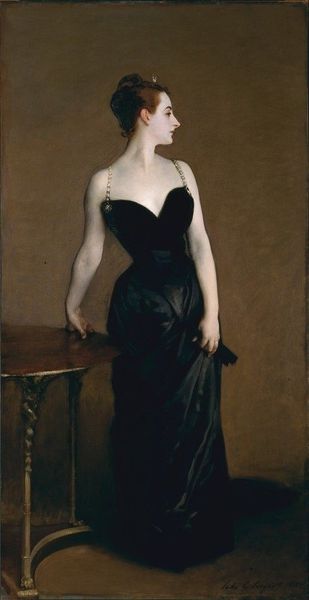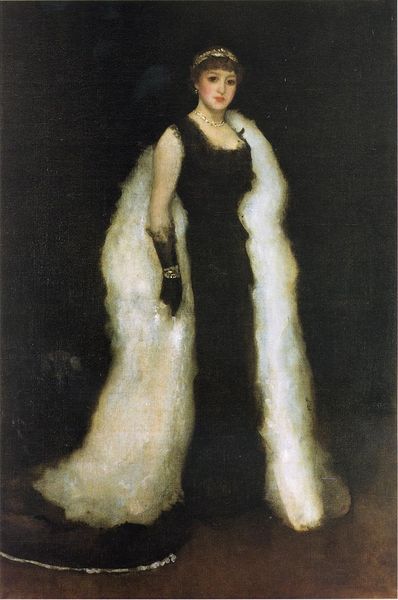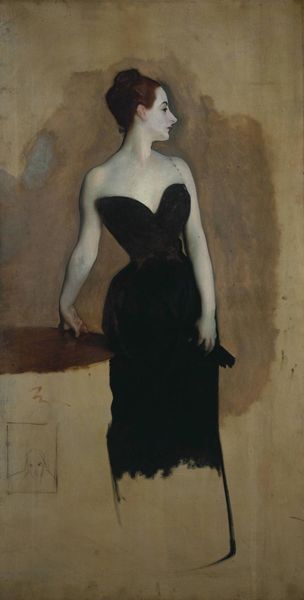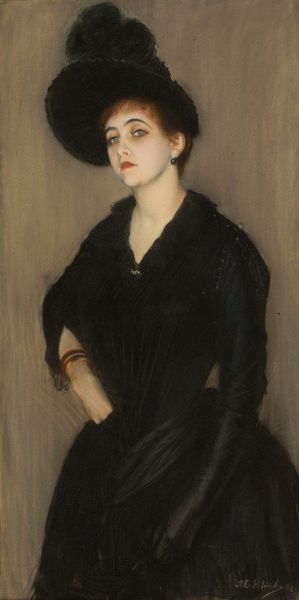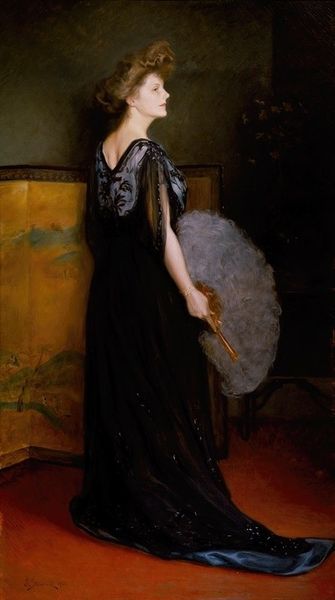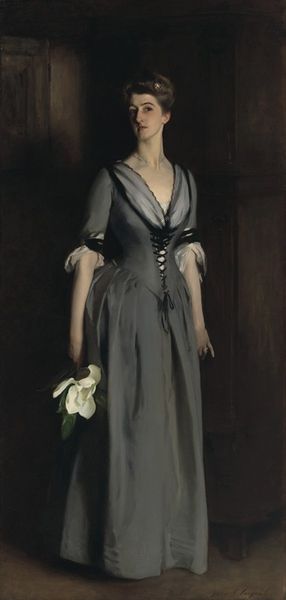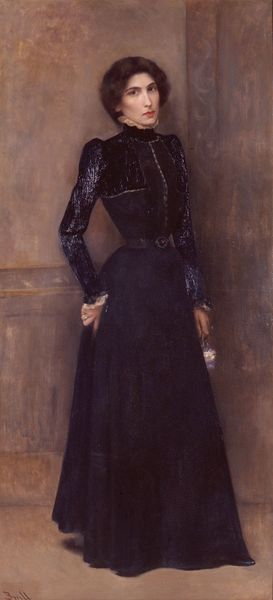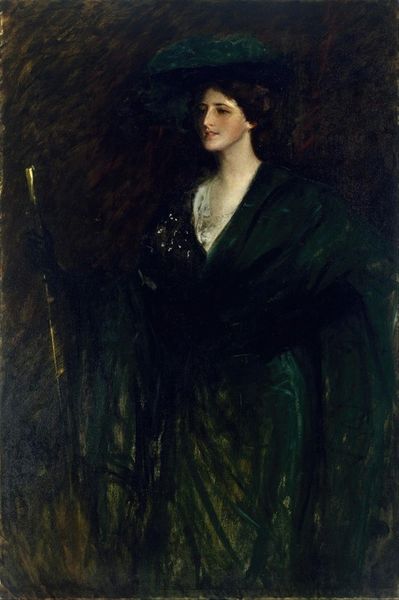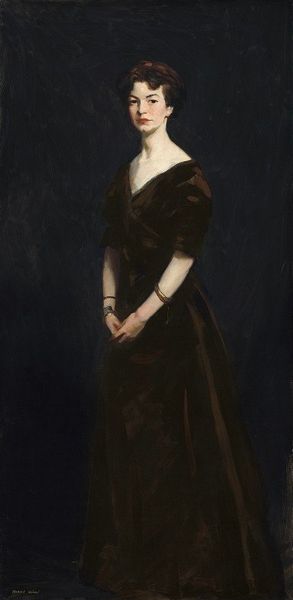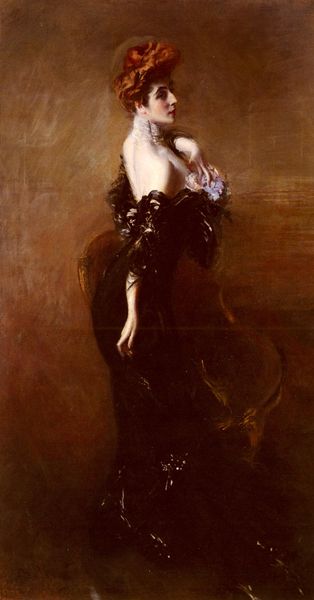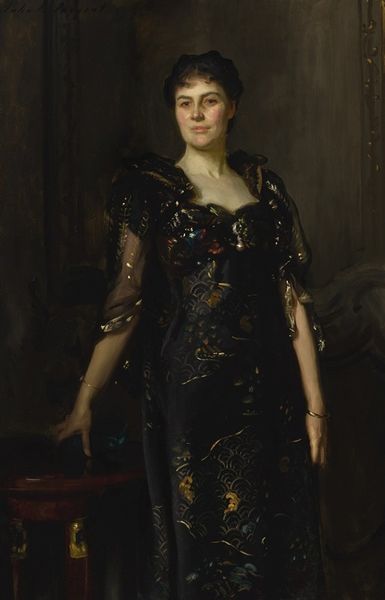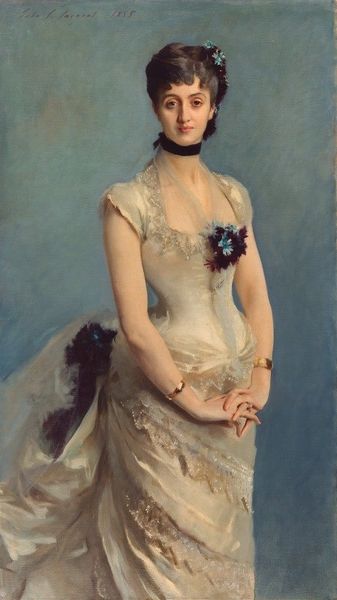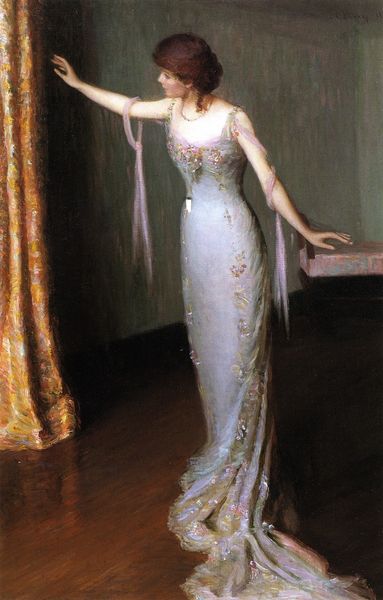
Copyright: Public domain
Editor: This is Teodor Axentowicz’s "Portret Janiny Poznańskiej" from 1910. Painted in oil, it captures a woman in a stunning black gown. There's something both elegant and melancholy about it. What do you see in this portrait, beyond the beautiful rendering? Curator: Oh, I see a world! Janina’s gaze isn't at us; it's directed elsewhere, full of untold stories. Notice the confident brushstrokes and impasto of the background, and how they soften to caress the woman. It's almost as though the green wants to fold her back into its dreamy world! Axentowicz wasn’t just painting a likeness, he was painting an experience, a mood, and perhaps, even, a secret yearning. Doesn't it feel that way to you? Editor: Yes, it absolutely does. The softness in contrast to the woman's formal attire...it is very evocative. The yellow flowers pop vividly against the black dress. Is there any symbolism there? Curator: Oh, definitely! In that period, flowers, particularly roses, spoke volumes about love, beauty, even fleeting beauty and mortality. That touch of yellow is not only striking, but offers a small flicker of happiness. Given the overall mood of wistful nostalgia, however, it's possibly there to accent an emotion of the past, not the present. She is beautiful, no? Now I wonder: where do you think Janina’s thoughts are taking her? Editor: To a past love, perhaps? Someone she misses? This painting tells a compelling, nuanced story. I’d never considered how a seemingly formal portrait could evoke such strong feelings. Thank you. Curator: Indeed. Art is powerful, isn’t it? And sometimes, the simplest glance sideways opens up a universe within us. That is what painting is all about, after all!
Comments
No comments
Be the first to comment and join the conversation on the ultimate creative platform.
